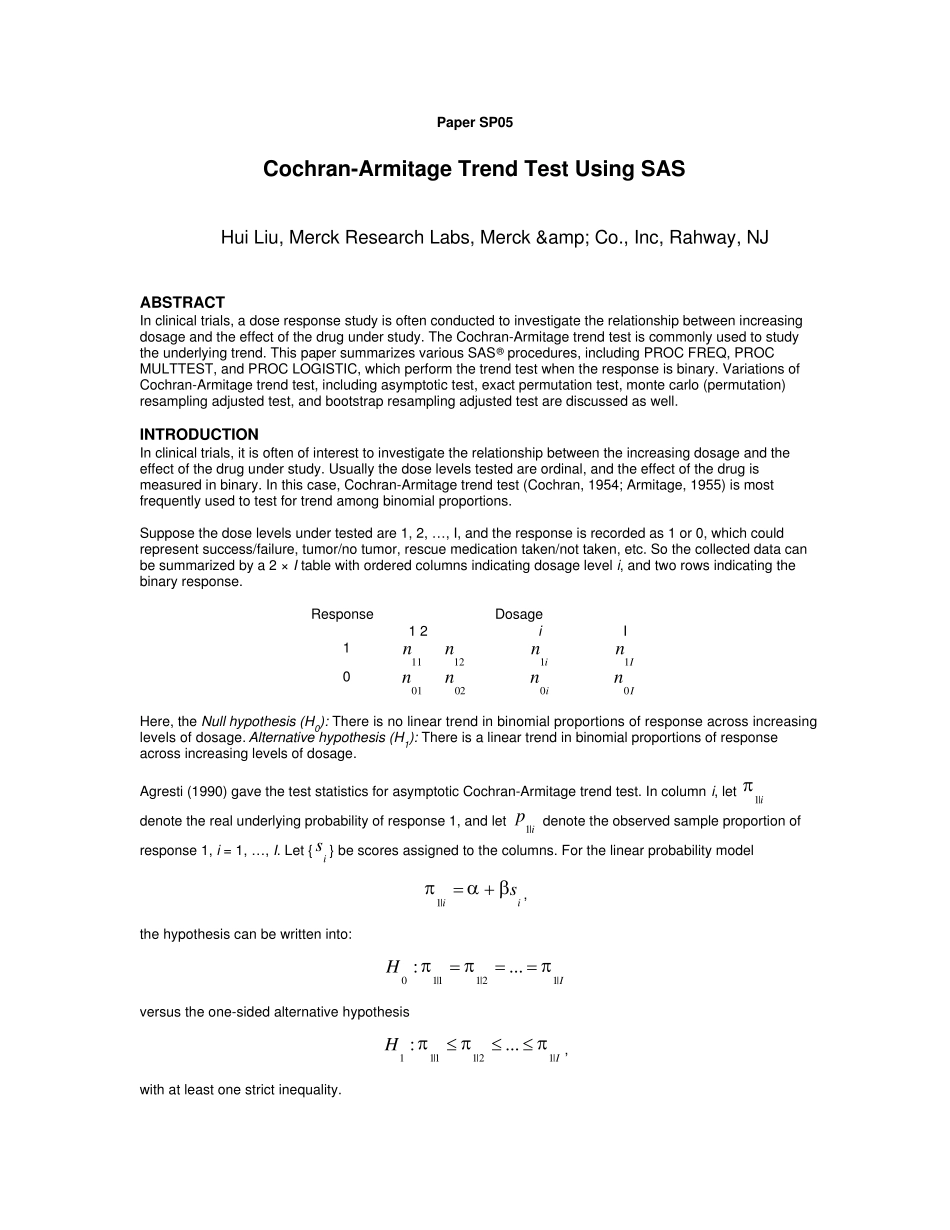Paper SP05 Cochran-Armitage Trend Test Using SAS Hui Liu, Merck Research Labs, Merck & Co., Inc, Rahway, NJ ABSTRACT In clinical trials, a dose response study is often conducted to investigate the relationship between increasing dosage and the effect of the drug under study. The Cochran-Armitage trend test is commonly used to study the underlying trend. This paper summarizes various SAS® procedures, including PROC FREQ, PROC MULTTEST, and PROC LOGISTIC, which perform the trend test when the response is binary. Variations of Cochran-Armitage trend test, including asymptotic test, exact permutation test, monte carlo (permutation) resampling adjusted test, and bootstrap resampling adjusted test are discussed as well. INTRODUCTION In clinical trials, it is often of interest to investigate the relationship between the increasing dosage and the effect of the drug under study. Usually the dose levels tested are ordinal, and the effect of the drug is measured in binary. In this case, Cochran-Armitage trend test (Cochran, 1954; Armitage, 1955) is most frequently used to test for trend among binomial proportions. Suppose the dose levels under tested are 1, 2, …, I, and the response is recorded as 1 or 0, which could represent success/failure, tumor/no tumor, rescue medication taken/not taken, etc. So the collected data can be summarized by a 2 × I table with ordered columns indicating dosage level i, and two rows indicating the binary response. Dosage Response 1 2 i I 1 11n 12n in1 In1 0 01n 02n in0 In0 Here, the Null hypothesis (H0): There is no linear trend in binomial proportions of response across increasing levels of dosage. Alternative hypothesis (H1): There is a linear trend in binomial proporti...


